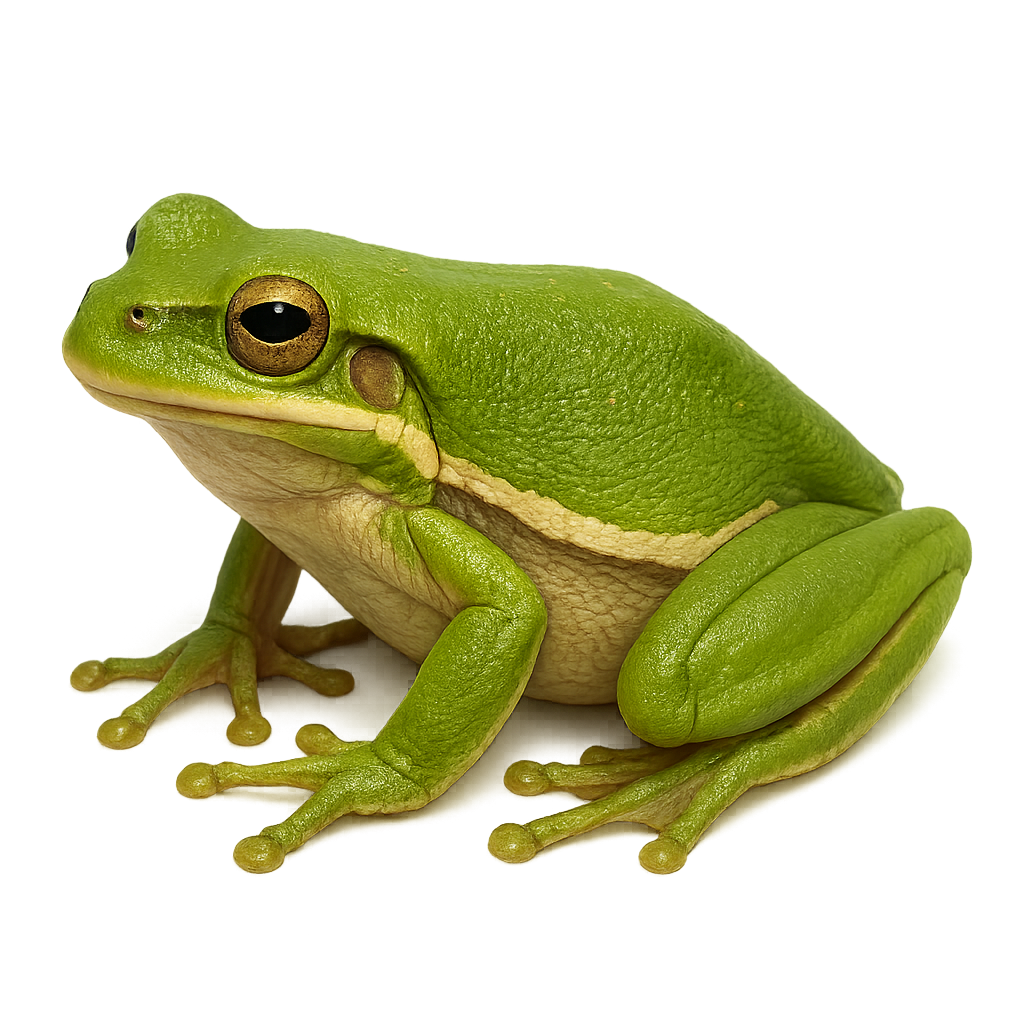Your wildlife photography guide.
Explore the green tree frog in detail, study its behavior, prepare your shots.
Where to observe and photograph the green tree frog in the wild
Learn where and when to spot the green tree frog in the wild, how to identify the species based on distinctive features, and what natural environments it inhabits. The WildlifePhotographer app offers tailored photography tips that reflect the green tree frog’s behavior, helping you capture better wildlife images. Explore the full species profile for key information including description, habitat, active periods, and approach techniques.
Green tree frog
Scientific name: Hyla cinerea

IUCN Status: Least Concern
Family: HYLIDAE
Group: Amphibians
Sensitivity to human approach: Tolerant
Minimum approach distance: 2 m
Reproduction period: March to April
Incubation: 4–14 jours
Births: March to April
Habitat:
marshes, ponds, moist forests
Activity period :
Mainly active at night, generally discreet during the day.
Identification and description:
The green tree frog, Hyla cinerea, is a small arboreal frog native to North America. It is characterized by its bright green color, sometimes adorned with white or golden spots. Its skin is smooth, and it has long limbs adapted for climbing. Measuring about 4 to 6 cm, it is often found near stagnant water bodies like marshes and ponds. Primarily nocturnal, it emits a distinctive call during the breeding season. Although common, it is sensitive to environmental changes, particularly water pollution and habitat destruction.
Recommended lens:
Macro – adjust based on distance, desired framing (portrait or habitat), and approach conditions.
Photography tips:
To photograph the green tree frog, focus on nighttime or twilight hours when it is most active. Use a macro lens to capture the details of its skin and vibrant colors. Approach slowly to avoid startling it, and use a tripod to stabilize your camera in low-light conditions. A diffused flash can be helpful to avoid harsh shadows and highlight the green hues. Be mindful of the environment to avoid disturbing its fragile habitat.
The WildlifePhotographer App is coming soon!
Be the first to explore the best nature spots, track rutting seasons, log your observations, and observe more wildlife.
Already 1 439 wildlife lovers subscribed worldwide

